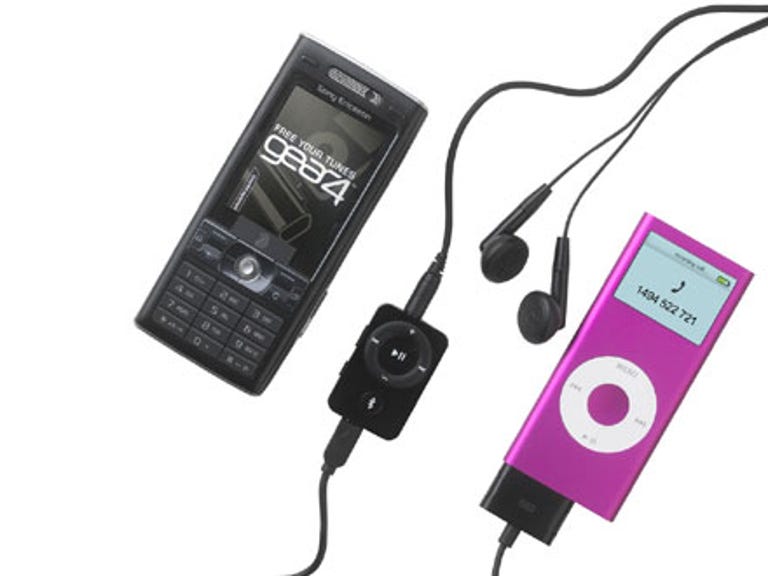 Why You Can Trust CNET
Why You Can Trust CNET Gear4 BluEye review: Gear4 BluEye
This compact gadget uses Bluetooth link your iPod to your mobile phone to make and receive calls, plus it throws an FM radio receiver into the bundle.
iPod owners will be familiar with the scenario. You're jogging away or just lost in the music when a faint repetitive noise or vibration tells you someone is calling you. Then it's a race to find your mobile, get the headphones off and see if you actually want to take the call. Or worse still, you realise later you've missed a call you would have quite liked to take.
The Good
The Bad
The Bottom Line
This problem now has a solution in the form of BluEye, a Bluetooth dongle that ties your iPod to your phone. While UK consumers have had a first generation BluEye MP3 player/Bluetooth hands-free mobile phone adaptor for almost a year, this more streamlined radio-integrated BluEye, licensed by Gear4, is limited to iPod users.
Design
Remarkably similar to Apple's iPod remote in design and size, the BluEye links your headphones to your iPod and connects firmly to your clothes with a spring-loaded, vertically aligned clip on the back.
The front of the device sports an iPod Shuffle-like circular control. The central button plays and pauses music, mutes radio, and answers and disconnects calls; while a four-way switch in a wheel around it controls volume, lets you scroll through received calls and skip back and forth through the songs in your library/playlist.
On the left-hand side sits a hold switch and a key to toggle between music and the integrated FM radio receiver.
A Bluetooth button below the familiar wheel recalls the last nine numbers called/received and activates voice dialling, as well as initially pairing the device with your Bluetooth-enabled mobile phone.
Performance
Testing with a Sony Ericsson K8010i and a fifth generation 30GB video iPod, the music paused and caller number appeared on the iPod's screen as promised when a call came through. While Gear4 say instant number recognition and answering should be available on production models due in November, our test prototype took almost three rings for the number to appear.
Instead of the mobile's (MP3) ringtone, a rather old-fashioned chiming ring also came through, though changing the phone's ringtone to a standard tone fixed the issue.
As soon as the caller ID appears on the iPod, pressing the BluEye's play/pause button lets you accept and disconnect calls. The music resumes without hassle from where you left off when you disconnect the call.
The sound quality was fine -- as good as can be expected from the Bluetooth standard even with the unit dangling, however callers experienced a stonger connection when the BluEye was firmly clipped onto some clothing.There are two ways to make calls from your iPod via the BluEye. The simplest is to press and hold the unit's Bluetooth button to scroll though the last nine received/made calls. The same button connects and disconnects calls.
If you have set up voice tags on your mobile phone, up to 15 voice activated contacts can be called through the BluEye by pressing the Bluetooth button and saying the contact name when you hear the tone. We had to try this a few times and speak directly into the unit, but while it was not a seamless process, it did eventually work.
A nice touch is that the BluEye can connect to the net via its tiny USB connection (cable not included) for firmware updates as the interface improves.
